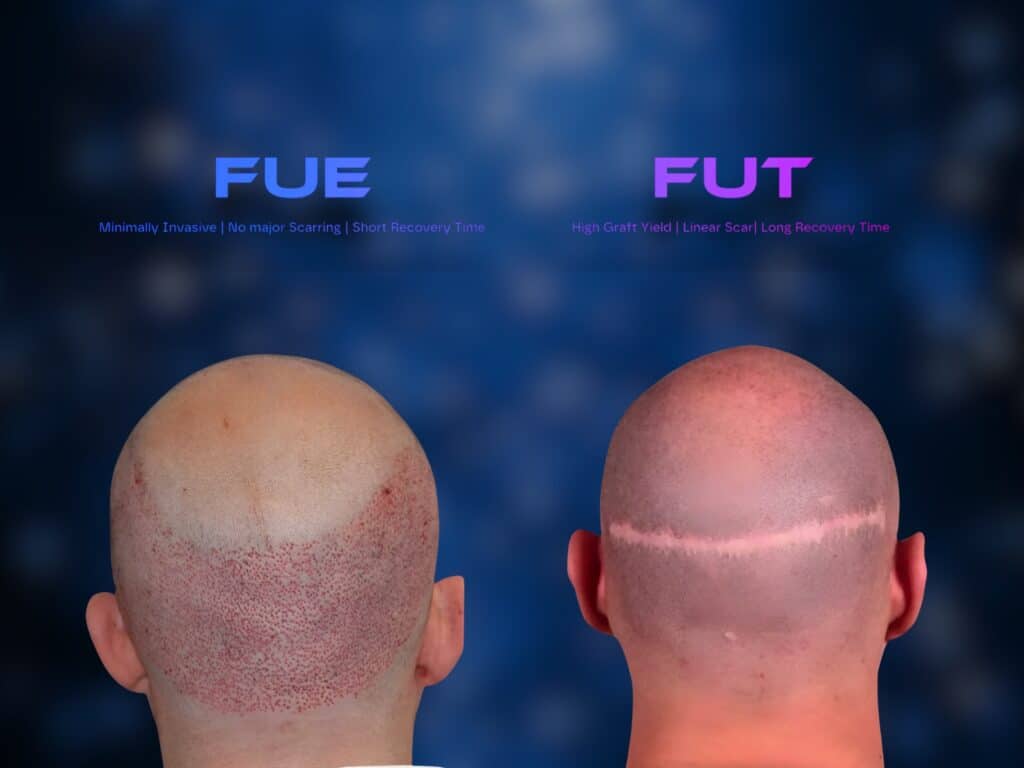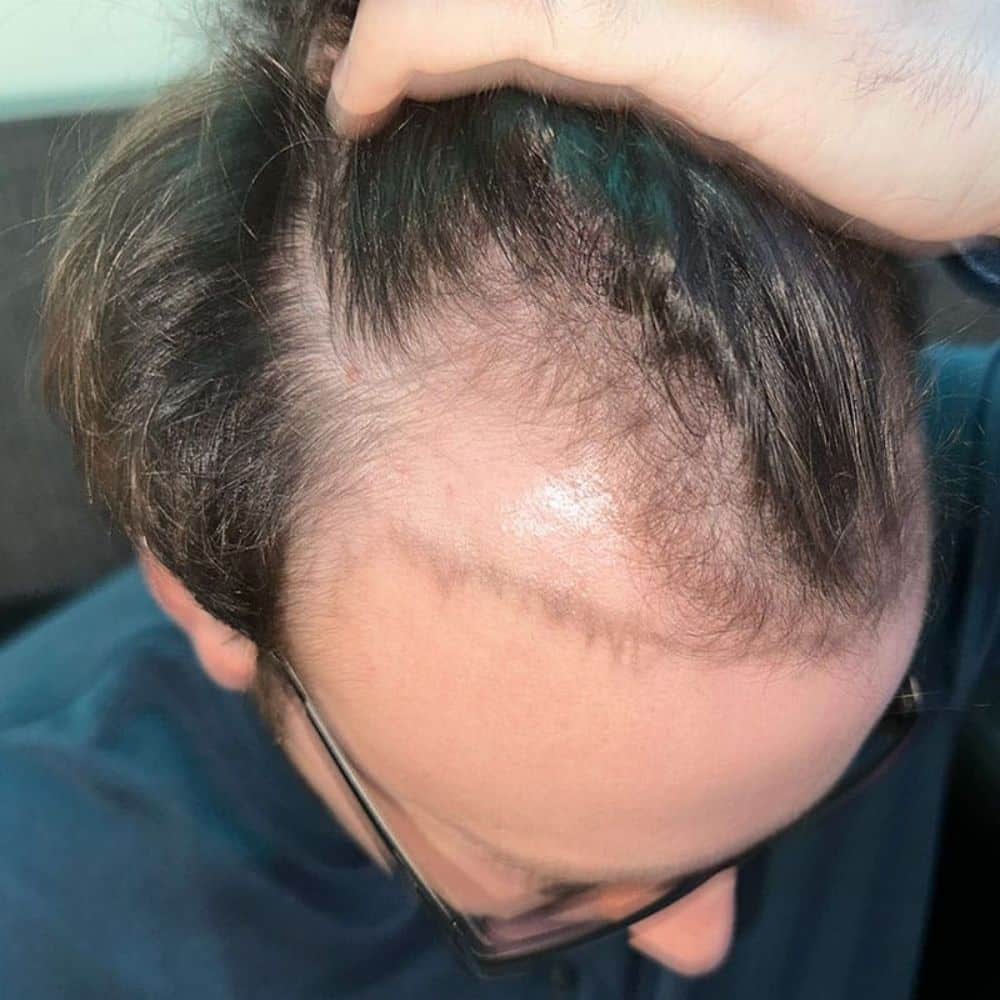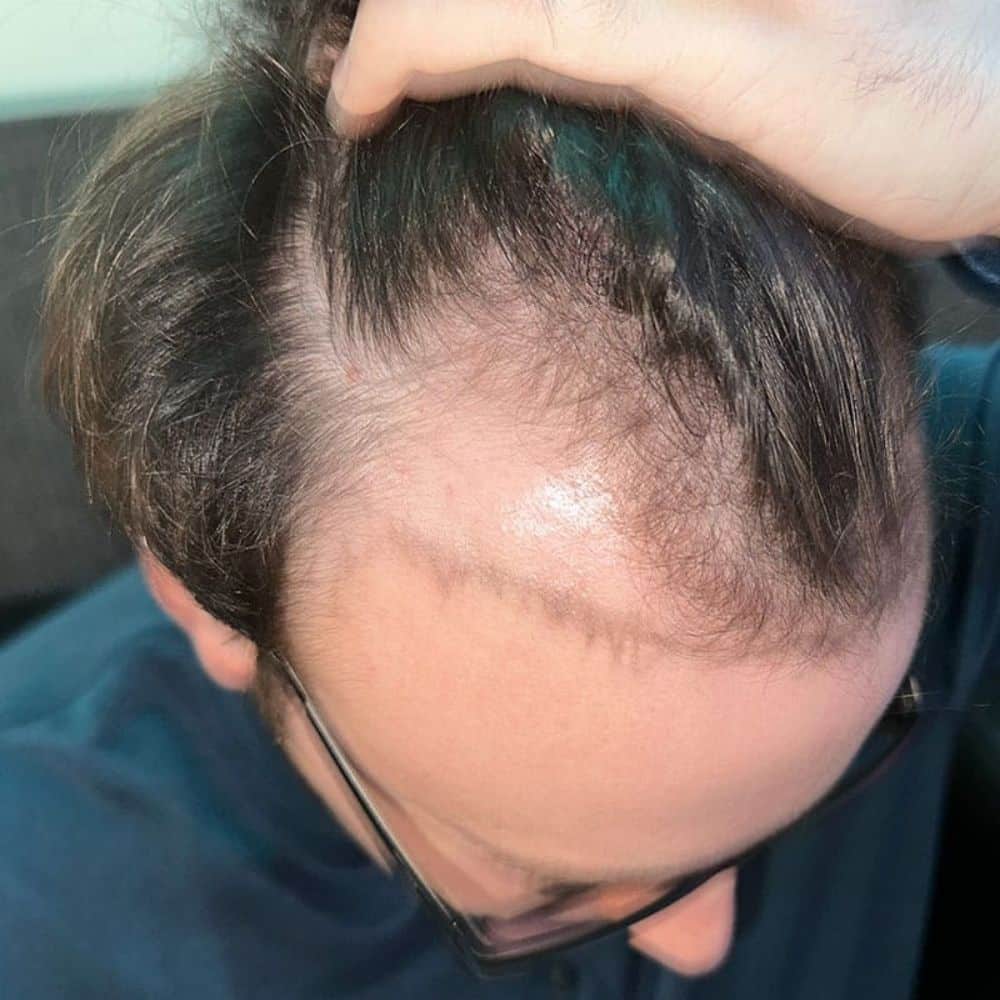Hair Transplantation
What You Need to Know
FUE VS FUT
Restore Your Real Hair Permanently
Hair transplant procedures typically fall into two categories: FUE and FUT. Both options offer effective solutions for hair loss, but the best choice depends on your unique needs and goals. Let’s explore how these techniques work.

The Difference Between FUE & FUT
Hair transplant procedures typically fall into two categories: FUE and FUT. Both options offer effective solutions for hair loss, but the best choice depends on your unique needs and goals. Let’s explore how these techniques work.

Follicular Unit Extraction
Follicular Unit Extraction
FUE hair transplants use an advanced, minimally invasive method to extract and implant individual hair follicles. Unlike traditional techniques, this approach minimizes trauma to the scalp, leading to reduced discomfort, faster healing times, and a more comfortable recovery process for patients.

Follicular Unit Transplantation
Healing in 10 days
FUT, also known as the strip method, involves removing a thin strip of tissue from the back of the head. The strip is then dissected into individual follicular units using stereo-microscopic technology. Although FUT can result in a higher yield of grafts, because of removing a strip of the scalp to extract there will be a scar left behind.
Benefits Of FUE & FUT


Both FUE and FUT offer significant advantages, depending on your specific needs:
Natural Results: Both techniques provide natural-looking hairlines and fullness.
Permanent Solution: Transplanted hair is resistant to the effects of DHT, the hormone responsible for hair loss.
Customizable: Each procedure is tailored to the patient’s unique hair loss pattern.


Stem Cell Therapy For Hair Restoration
Stem cell therapy is a revolutionary, non-surgical treatment that complements hair transplant procedures. Here’s how it works:

Cellular Regeneration
Stem cells help repair damaged hair follicles and stimulate new hair growth.

Minimally Invasive
Stem cells are derived from the patient’s own tissue or ethically sourced materials and injected into the scalp.

Enhanced Results
Stem cell therapy can improve hair density, quality, and overall scalp health, making it a valuable addition to FUE or FUT.
Patients can benefit from stem cell therapy as a standalone treatment or as part of their hair restoration journey.
Recovery times for hair transplant procedures vary depending on the method used:
What About The Recovery Process?

FUE Recovery
Faster Healing: Most patients resume normal activities within a week.
Minimal Scarring: Tiny incisions heal quickly and are virtually undetectable.
FUT Recovery
Slightly Longer Recovery: The linear scar requires extra care, but healing is typically complete within two weeks.
Comfort Management: Anti-inflammatory medications and rest are essential for optimal recovery.
* Regardless of the method, patients should avoid strenuous activities and protect the scalp during the healing process.*
Choosing the Right Hair Transplant Procedure
The final decision between FUE and FUT depends on various factors, including:

Hair Loss Severity:
FUT may be better for extensive hair loss, while FUE suits localized thinning.

Lifestyle Needs
FUE’s minimal downtime is ideal for active individuals.

Budget Considerations
With nearly two decades of experience and thousands of satisfied patients.

Ready To Restore Your Hair?
Whether you’re leaning toward FUE or FUT, consulting with a trusted hair transplant specialist is the first step toward achieving your goals. Explore your options, weigh the pros and cons, and embark on a journey to a fuller, more confident you.
Contact Best Hair Transplant today to schedule your consultation and take the first step toward reclaiming your hairline. Our experts are here to guide you through the process and ensure the best possible results.
Call Now
Call Now
